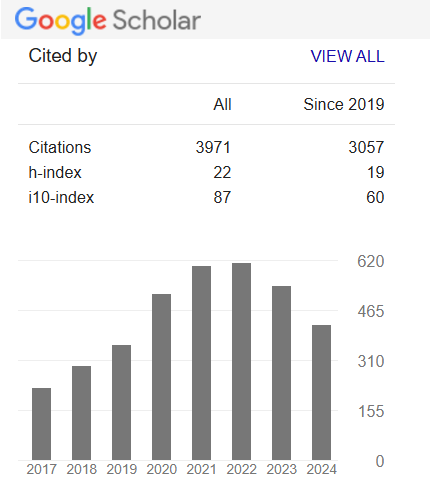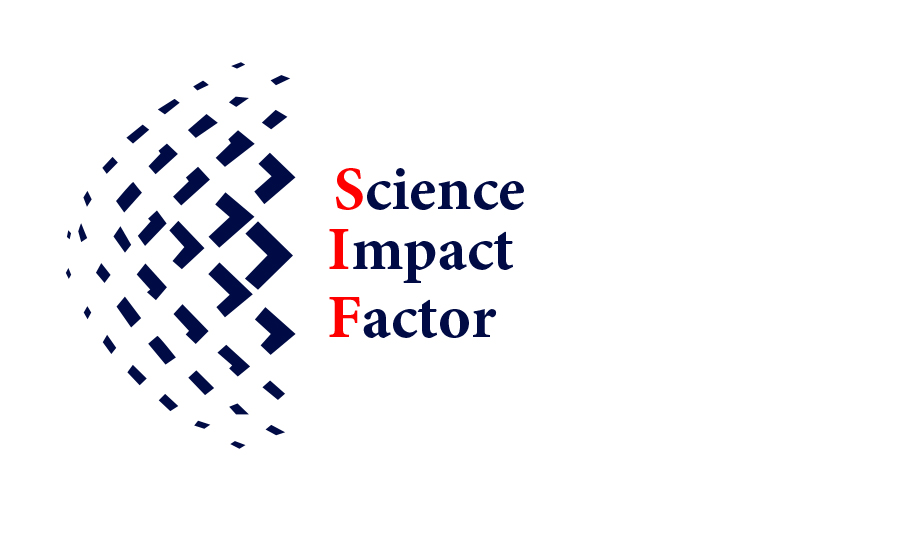Bio particle monitoring and its significance in public health
Abstract
Our environment has a great influence on public health. The atmosphere is loaded with essential and non-essential particles of biological and a-biological origin. The particles of biological origin are often referred to as bioparticles. Pollen grains released from the anthers of flowering plants and spores from lower plants constitute the airborne bioparticles/aerosol. In the atmosphere, the fungal spores are most predominant. The ratio of pollen to fungal spore goes up to 1:30 in certain seasons. Aerobiological survey of pollen/spore monitoring is carried out by operating a volumetric Rotorod Air Sampler (Model-40) installed at about 15 meters above the ground level on the rooftop of the terrace of S.K.Porwal College, Kamptee from June 2018 to May 2019. Respiratory diseases like asthma and chronic pulmonary obstructive diseases mostly relate to fungal bioparticles. A questionnaire method was used to facilitate the testing and monitoring appraisal of airborne bioaerosols and their impact on human health.
Keywords: Bioparticles, Fungal spores, Pollen grains, Public health, Rotorod air sampler.
Downloads
References
Agashe SN and Elfadil AG (1989) Atmospheric biopollutant monitoring in relation to meteorological parameters. Grana, 28: 87-104.
Agashe SN and Vidya MP (2000) Bio-pollution in the Bangalore urban environment and its implication on public health. Proceedings of the Ninth National Symposium on Environment, pp. 40-42.
Anathanarayana R and Paniker C (2009) Textbook of Microbiology. University press, Delhi
Barnett H (1960) Illustrated genera of imperfecti fungi. Burgess Publishing Co.
Bhattacharya K, Majumdar MR and Bhattacharya SG (2006). A textbook of Palynology. New Central Book Agency, Kolkata.
Caruana D J (2011) Detection and Analysis of Airborne Particles of Biological Origin: Present and Future. Analyst 136 (22):4641–4652. https://www.doi.com 10.1039/c1an15506g
Dhole P (2024) Monitoring environment for bioparticles and its significance in public health. In: Aerobiology, Allergy and Immunotherapy. Dr Jayshree Thaware [Ed.] ABS Books, New Delhi pp.96-106.
Ellis MB (1971) Dematiaceous Hyphomycetes Kew Commonwealth Mycological Institute, Kew, U.K.
Fatahinia M, Zarei-Mahmoudabadi A, Shokri H, and Ghaymi, H (2018) Monitoring of Mycoflora in Outdoor Air of Different Localities of Ahvaz, Iran. J. de Mycologie Médicale 28 (1): 87–93. https://www.doi.com10.1016/j.mycmed.2017.12.002
Funder Sigurd (1953) Practical Mycology; manual for identification of fungi. Broggers Boktr. Forlag, Oslo Norway.
Gandolfi I, Bertolini V, Ambrosini R, Bestetti G, and Franzetti A (2013) Unraveling the Bacterial Diversity in the Atmosphere. Appl. Microbiol. Biotechnol. 97 (11): 4727–4736. https://www.doi.org10.1007/s00253-013-4901-2.
Ghosh B, Lal H, and Srivastava A (2015) Review of Bioaerosols in Indoor Environment with Special Reference to Sampling, Analysis and Control Mechanisms. Environ. Int. 85: 254–272. https://www.doi.com10.1016/j.envint.2015.09.018.
Gilman JC (1945) Manual of Soil Fungi. The Iowa State College Press Ames, Iowa.
Gregory PH (1973) The microbiology of the atmosphere. New York, Halstead Press.
Humbal C, Gautam S, and Trivedi U (2018) A Review on Recent Progress in Observations, and Health Effects of Bioaerosols. Environ. Int. 118:189–193. https://www.doi.com10.1016/j.envint.2018.05.053.
Hyde HA (1960) Aerobiology and Medicine. Nature. 188: 182-183.
Nagmani A, Kumar IK, Manoharachary C (2006) Handbook of Soil Fungi. I.K. International Pvt. Ltd., New Delhi and Bangalore.
Naruka K and Gaur J (2019) Distribution pattern of airborne bacteria and fungi at market area. American –Eurasian J. Sci. Res. 9 (6): 186-192.
Noorimotlagh Z, Jaafarzadeh N, Martínez SS and Mirzaee SA (2020) A Systematic Review of Possible Airborne Transmission of the COVID-19 Virus (SARS-CoV-2) in the Indoor Air Environment. Environ. Res. 193:110612. https://www.doi.com10.1016/j.envres.2020.110612
Samake A , Uzu G, Martins JMF, Calas A, Vince E, Parat S et al. (2017) The Unexpected Role of Bioaerosols in the Oxidative Potential of PM. Sci. Rep., 7 (1): 10978. https://doi:10.1038/s41598-017-11178-0.
Shammi M, Rahman MM and Areq SM (2021) Distribution of bioaerosols in association with particulate matter: a review on emerging public health threat in Asian megacities. Frontiers in Environmental Sci., 9: 698215. https://doi.org/10.3389/fenvs.2021.698215.
Thaware J (2019) Atmospheric concentration of airborne pollen grains at Kamptee Dist-Nagpur International Research Journal of Natural and Applied Sciences, 6(6):102-106
Thaware J (2023) Aeromycoflora associated with museum and herbarium of a degree college at Kamptee (Nagpur), Maharashtra. Indian Journal of Aerobiology, 36 (1): 19-28.
Downloads
Published
How to Cite
Issue
Section
License
Copyright (c) 2025 Jayshree Thaware

This work is licensed under a Creative Commons Attribution-NonCommercial-NoDerivatives 4.0 International License.
Open Access This article is licensed under a Creative Commons Attribution 4.0 International License, which permits use, sharing, adaptation, distribution and reproduction in any medium or format, as long as you give appropriate credit to the original author(s) and the source, provide a link to the Creative Commons license, and indicate if changes were made. The images or other third party material in this article are included in the article’s Creative Commons license unless indicated otherwise in a credit line to the material. If the material is not included in the article’s Creative Commons license and your intended use is not permitted by statutory regulation or exceeds the permitted use, you will need to obtain permission directly from the copyright holder. To view a copy of this license, visit http://creativecommons.org/ licenses/by/4.0/










